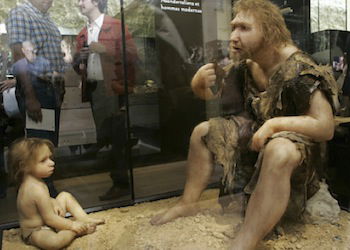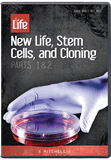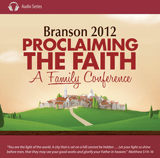
Could Cloning Technology Resurrect Humanity’s Past?
Even if cloning technology could resurrect humanity’s past, should it?
News Source
Is Harvard geneticist George Church planning to follow in the footsteps of Jurassic Park’s John Hammond (portrayed in the movie by Sir Richard Attenborough) by re-creating Neanderthal people? He’d like to give it a try. In the film, Hammond cloned dinosaurs from DNA preserved in amber and incubated the cloned material in crocodile eggs. Church says to produce Neander-babies he’ll needs human embryos and a willing surrogate mother.
Church, who was involved in the Human Genome Project, believes he can rebuild the DNA for a complete Neanderthal from DNA in Neanderthal fossils. He proposes transplanting Neanderthal DNA into a human embryo at an early stage. Church anticipates the synthetically produced Neanderthal DNA would then direct the embryo’s development as a Neanderthal. After initially growing in the lab, the “test-tube Neanderthal” would be transplanted into a human surrogate’s uterus.
“Now I need an adventurous female human. It depends on . . . a lot of things, but I think it can be done,” Church says. “Neanderthals might think differently than we do. They could even be more intelligent than us. When the time comes to deal with an epidemic or getting off the planet, it’s conceivable that their way of thinking could be beneficial.”
Legally, such experimentation would likely be possible only in the United States, as the U.S. Congress has not yet succeeded in agreeing on legislation to prohibit human reproductive cloning. Since the successful cloning of sheep at Scotland’s Roslin Institute produced “Dolly” in 1997,1 several efforts to pass such legislation have gotten bogged down in disagreements about specific provisions. Therefore, although human cloning for reproductive purposes is prohibited or restricted in some states, there are currently no federal laws prohibiting human cloning.2

This scene from Jurassic Park shows the scientists’ excitement as they examine dinosaurs cloned from preserved DNA. In addition to various technological distinctions between Church’s proposal and character John Hammond’s dino-DNA project, however, there is an epic moral difference. Dinosaurs are animals, and there would be no ethical ground to oppose efforts to clone them. Neanderthals were human beings made in the image of God our Creator, however. The death toll among modern human embryos and any Neanderthal embryos that might be created would make it morally wrong to pursue this line of research. Image credit: movie Jurassic Park through www.dailymail.co.uk

This cozy Neanderthal scene at France’s Museum for Prehistory in Eyzies-de-Tayac is a testimony to the improving image of Neanderthals in modern times. Despite the hoopla over geneticist George Church’s proposal to try cloning Neanderthals so that they can apply their intellectual distinctiveness to modern problems, bioethicist Arthur Caplan is of the opinion that we don’t need to “worry about what will happen to real estate values should a new crop of ‘Flintstones’ move in” because he doubts anyone will really try it.3 Image : Patrick Bernard AFP/Getty Image File through www.cnn.com
Church’s idea is already generating ripples among ethicists. Bioethicist Bernard Rollin of Colorado State University said “I don’t think it’s fair to put people . . . into a circumstance where they are going to be mocked and possibly feared,” commented Colorado State University bioethicist Bernard Rollin. And Philippa Taylor of the Christian Medical Fellowship said, “It is hard to know where to begin with the ethical and safety concerns.”
Those ethical concerns must begin with a consideration of the life of the human embryos that would be lost in order to conduct the experiments and ultimately hybridize the Neander-person embryo. Human cloning is already considered, even among secular circles in the United States, a morally questionable enterprise. Many kinds of animals have been cloned, and cloning is likely to be an increasingly useful adjunct for meeting agricultural needs. However, statistically, most cloning attempts fail, and many clones suffer debilitating problems.
The Human Genome Project “Cloning Fact Sheet” states:
Due to the inefficiency of animal cloning (only about 1 or 2 viable offspring for every 100 experiments) and the lack of understanding about reproductive cloning, many scientists and physicians strongly believe that it would be unethical to attempt to clone humans. Not only do most attempts to clone mammals fail, about 30% of clones born alive are affected with “large-offspring syndrome” and other debilitating conditions. Several cloned animals have died prematurely from infections and other complications. The same problems would be expected in human cloning. In addition, scientists do not know how cloning could impact mental development. While factors such as intellect and mood may not be as important for a cow or a mouse, they are crucial for the development of healthy humans. With so many unknowns concerning reproductive cloning, the attempt to clone humans at this time is considered potentially dangerous and ethically irresponsible.4
The American Medical Association and the American Academy for the Advancement of Science have issued statements opposing human reproductive cloning. The Center for Genetics and Society concurs with this assessment, saying:
Human reproductive cloning is almost universally opposed. Overwhelming majorities reject it in opinion surveys. Many international agreements and countries (though not the United States) formally prohibit it. Some oppose reproductive cloning because of safety considerations. Animal cloning is seldom successful, and many scientists believe that reproductive cloning can never be made safe. Human reproductive cloning would also threaten the psychological well-being of cloned children, open the door to more powerful genetic manipulation technologies, and raise other social and ethical concerns.”5
All humans, included Neanderthals, have descended from Adam and Eve. And while it is heartening to see Neanderthal intellect and humanity being recognized nowadays, they are not our evolutionary ancestors. They were one of the varieties of people that lived after the global Flood, descended from Noah’s family. Fossils of people preserved in Ice Age sediments include Neanderthals, Homo erectus, and Denisovans. The overlap of Neanderthal DNA and Denisovan DNA (none having yet been recovered from Homo erectus) with modern human DNA is a result of the fact that all people since the global Flood have been descendants of Noah’s family.
Assuming a Neander-person could be cloned, given the differences in environment and experiences, there would still be no way to know such a modern Neanderthal was revealing the nature of Neanderthals from the past.
Assuming a Neander-person could be cloned, given the differences in environment and experiences, there would still be no way to know such a modern Neanderthal was revealing the nature of Neanderthals from the past. New York University bioethicist Arthur Caplan points out that cloning a person would not produce a person like the original person anyway. He writes:
If I have a twin and I die I am not still alive because my twin lives on. Cloning creates a new person–one who might look like the source of the cloned genome and have many traits in common but would still be an independent novel person.
Nor can cloning bring back the dead. It cannot do this for pets much less people. A cloned dog does not know the tricks and behavior of the “old” dog that is dead. Unless you can replicate the developmental and environmental experiences that the original animal or person had you will not resurrect the dead via cloning.6
There also remains the question of how a Neanderthal clone would be treated in society. Considering the fact that our society refuses legal protection to the lives of the unborn, the status of a cloned Neanderthal—who would be the product of research that killed many human embryos along the way—would be questionable at best. In fact, after Church’s speculations bounced around the internet for a couple of days, CNN published bioethicist Arthur Caplan’s opinion:
It would by unethical to try and clone a Neanderthal baby. . . . At best it might shed some light on the biology and behavior of a distant ancestor. At worst it would be nothing more than the ultimate reality television show exploitation. . . .
We love to think that the key to tomorrow lies in what humanity can be designed or empowered to do. Thus, the fascination with human cloning.7
While even most secular circles at present consider human reproductive cloning to be morally irresponsible, there is no guarantee they will maintain the same stand on Neanderthal cloning. They typically do not recognize the human embryo as deserving of protection. It doesn’t take much of a leap to see how they would consider the Neanderthal—only in recent years recognized as intelligent and human—an experimental subject. Such a person would be subject to all sorts of indignity, exploitation, and danger. A biblically grounded stand for the sanctity of human life must oppose even beginning this sort of experimentation.
Further Reading
- The Scientific and Scriptural Case Against Human Cloning
- Cloning: Right or Wrong?
- Cloning Used to Make Usable Stem Cells (a clone by any other name...)
- Those Enigmatic Neanderthals
- Neanderthals vs. Humans: Are They Different?
- When Did Cavemen Live?
- Were Cavemen Real?
- Jurassic Spark?
For More Information: Get Answers
Remember, if you see a news story that might merit some attention, let us know about it! (Note: if the story originates from the Associated Press, FOX News, MSNBC, the New York Times, or another major national media outlet, we will most likely have already heard about it.) And thanks to all of our readers who have submitted great news tips to us. If you didn’t catch all the latest News to Know, why not take a look to see what you’ve missed?
(Please note that links will take you directly to the source. Answers in Genesis is not responsible for content on the websites to which we refer. For more information, please see our Privacy Policy.)
Footnotes
- Nature 385 (1997):810–13. See Cloning: Right or Wrong?
- Some experts, such as New York University bioethicist Arthur Caplan, believe human reproductive cloning is a silly topic on which to waste time, asserting it will never catch on. (www.ipscell.com/2013/01/guest-post-by-art-caplan-on-human-reproductive-cloning) Others, such as cloning pioneer Sir John Gurdon—who cloned frogs in the 1950s and 1960s in work that was foundational for the sheep success—believe human cloning would catch on just as in vitro fertilization did. He says, “I take the view that anything you can do to relieve suffering or improve human health will usually be widely accepted by the public – that is to say if cloning actually turned out to be solving some problems and was useful to people, I think it would be accepted.” (www.geneticsandsociety.org/article.php?id=6592)
- www.cnn.com/2013/01/24/opinion/caplan-neanderthal-baby/index.html
- www.ornl.gov/sci/techresources/Human_Genome/elsi/cloning.shtml
- www.geneticsandsociety.org/section.php?id=16
- www.ipscell.com/2013/01/guest-post-by-art-caplan-on-human-reproductive-cloning
- www.cnn.com/2013/01/24/opinion/caplan-neanderthal-baby/index.html
Recommended Resources

Answers in Genesis is an apologetics ministry, dedicated to helping Christians defend their faith and proclaim the good news of Jesus Christ.
- Customer Service 800.778.3390
- © 2024 Answers in Genesis




